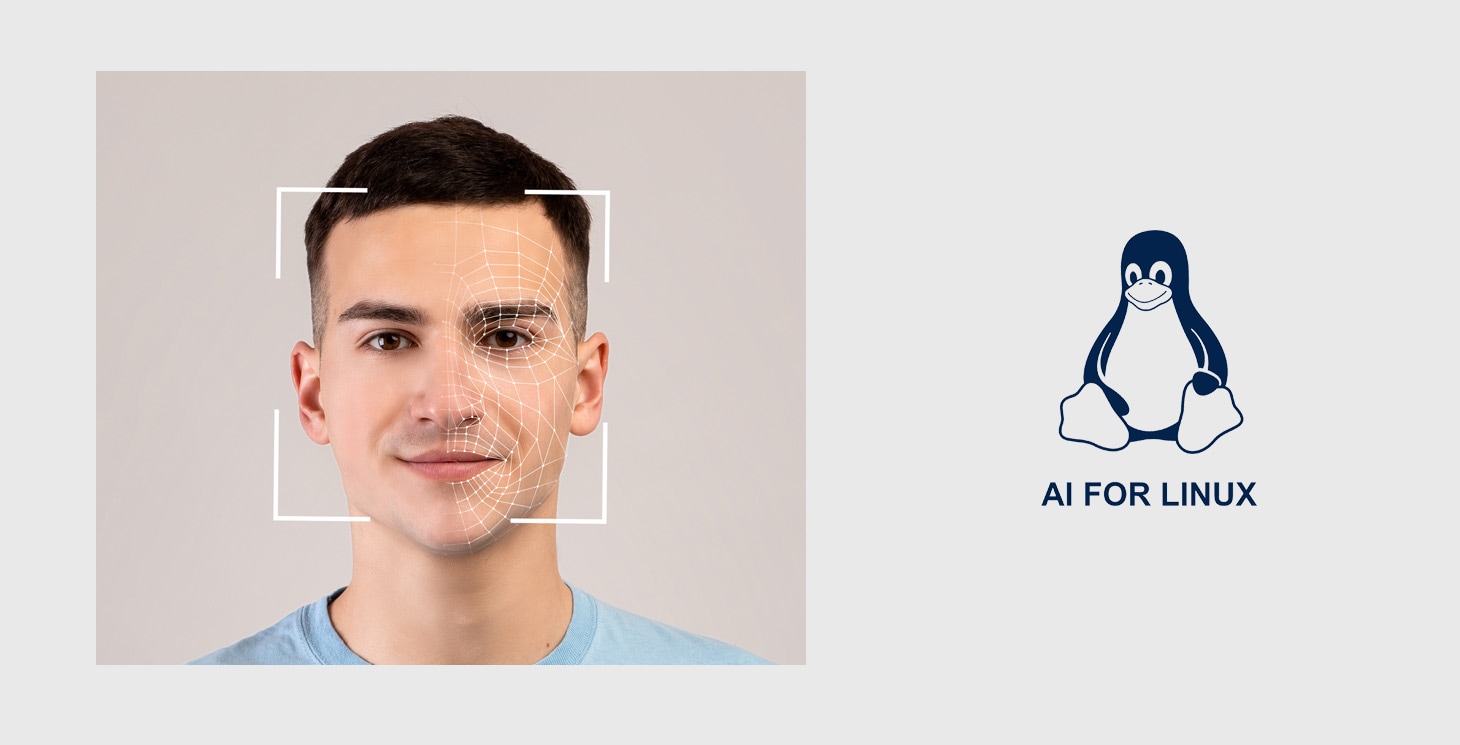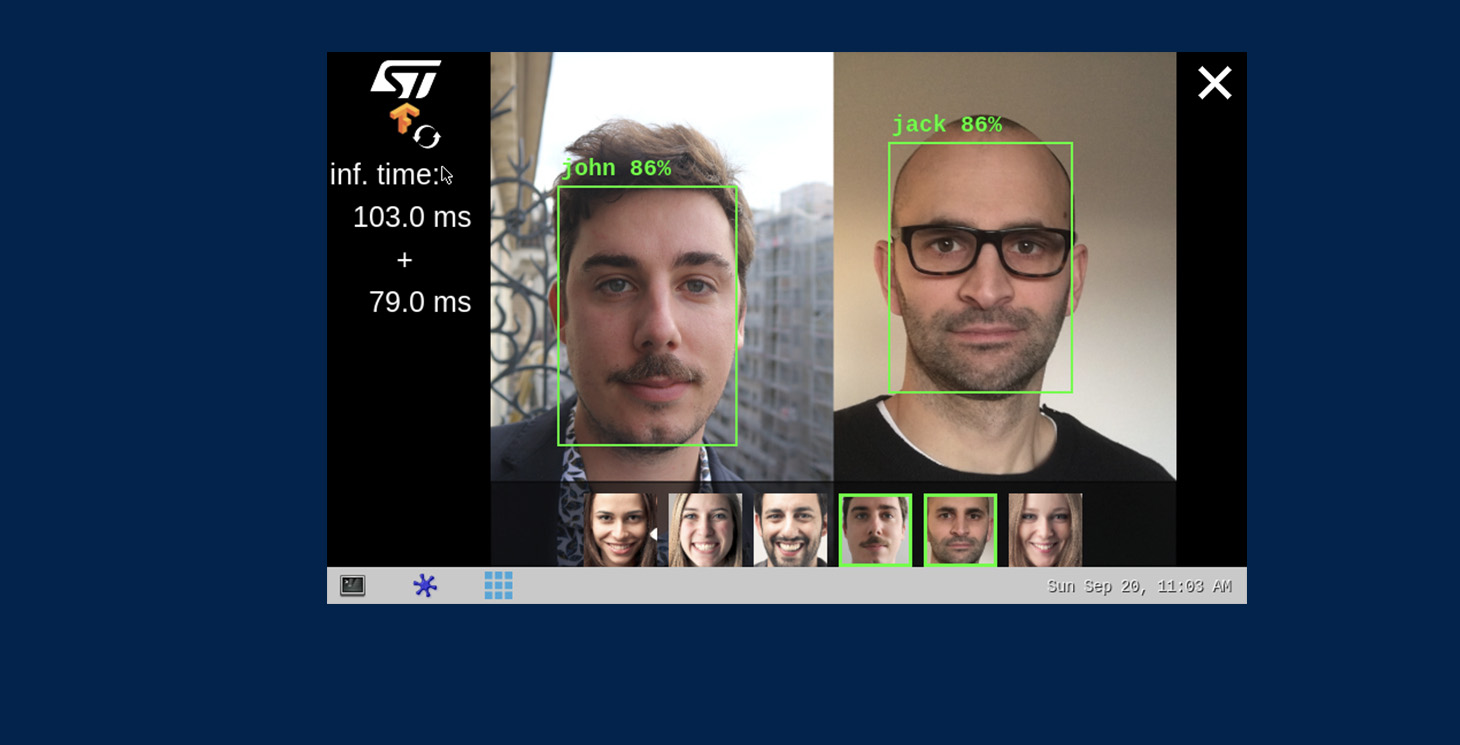Access control with face recognition
Face identification on a high-performance MPU.


Approach
Frames are grabbed from a camera input (/dev/videox) and processed by two neural network models (face detection and face recognition) interpreted by theTensorFlow Lite runtimeframework.
A GStreamer pipeline is used to stream camera frames (using v4l2src), to display a preview (using waylandsink), and to execute neural network inference (using appsink).
The result of the inference is displayed using overlay generated by GtkWidgets with Cairo.



Pipeline
Sensor
Data
Results
Results on STM32MP157F (High-perf)
The average execution frame rate to execute both face detection and face recognition on1 faceis around 5 fps
- Face detection execution time ~ 70 ms
- Face recognition execution time ~ 55 ms
Resources
Optimized with AI for OpenSTLinux
X-LINUX-AI is an STM32 MPU OpenSTLinux expansion package for running AI models on STM32MP1 microprocessors. It contains Linux® AI frameworks, as well as application examples.
Compatible with STM32MP1 series
STM32MP1 microprocessor series from single Arm® Cortex®-A7 up to dual Arm® Cortex®-A7 and Cortex®-M4 cores A general-purpose microprocessor portfolio enabling easy development for a broad range of applications, the STM32MP1 series has the ability to support multiple and flexible applications, achieving the best performance and power figures at any time.